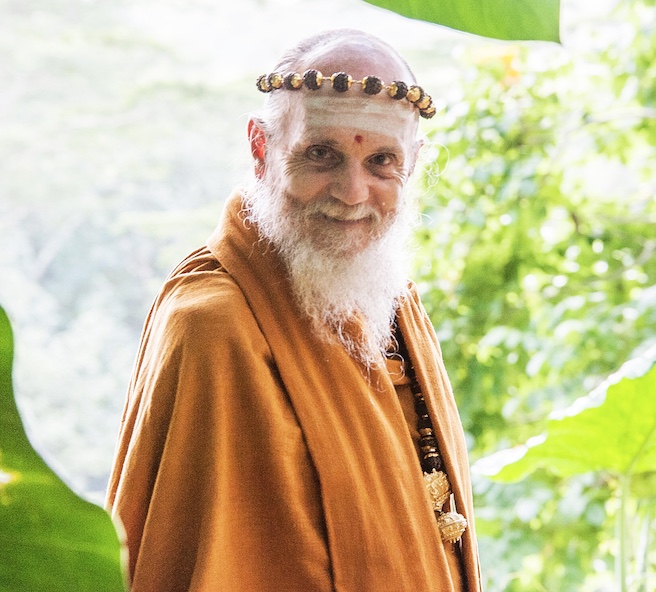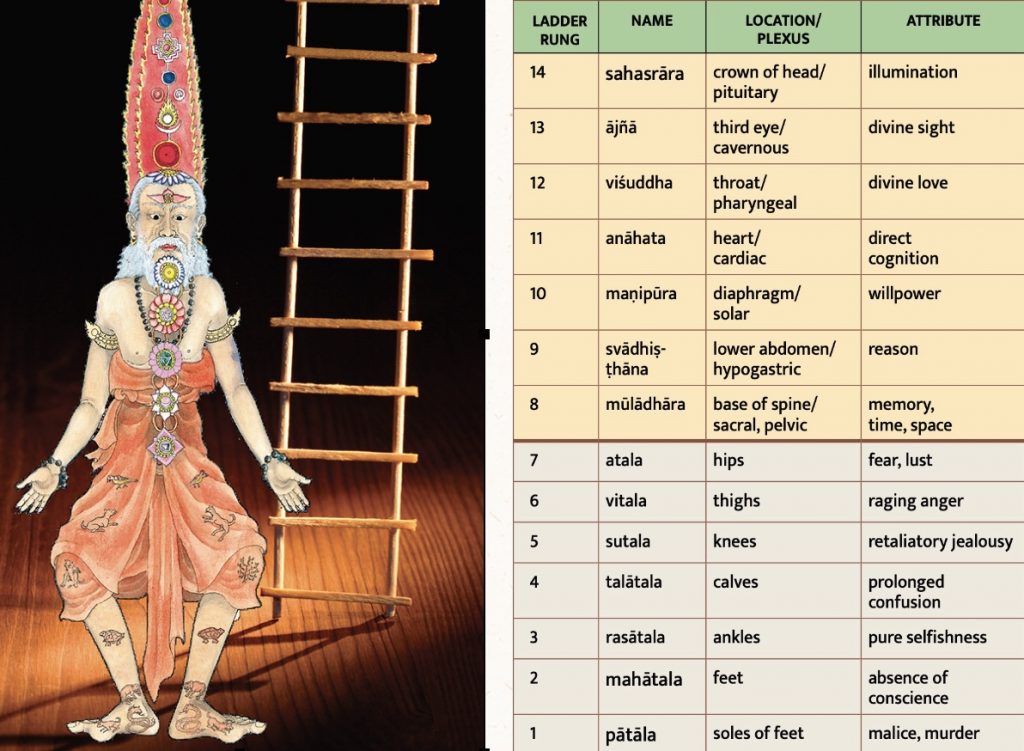Hinduism has developed the most elaborate, detailed map of the evolution of awareness, which can guide us toward liberation
By Satguru Bodhinatha Veylanswami


The core purpose of all the major religions is to provide guidance to human beings so that in pursuing their natural ambitions to achieve wealth and love they do so in a manner that adheres to the principles of virtue. In some religions, this focus on virtuous and dutiful living is the sum total of its religious practice. However, in Hinduism there is an important fourth pursuit: liberation. Together these four, called dharma (virtue), artha (wealth), kama (love) and moksha (liberation), are referred to as the purusharthas, which means “goals of the soul.”
Also called chaturvarga, “four-fold good,” they form a cornerstone of Hindu ethics. Although dharma, artha and kama are valid and important ends in themselves, their greatest value is in providing the environment and experiences which help the embodied soul mature over many lives until it attains moksha. In other words, moksha is a higher level goal than dharma, artha and kama. My guru, Sivaya Subramuniyaswami, expressed this idea in saying: “To know yourself is why you are on Earth. You were born to realize the Self. You are not here to make money, to clothe yourself or to entertain yourself. These are incidentals.”
The fourth pursuit, moksha, is liberation from rebirth on Earth, release from transmigration, samsara, the round of births and deaths. Until moksha is achieved, a soul continues to be reborn on Earth. Gurudeva described the achievement in this way: “Liberation [moksha] comes when dharma has been well-performed, all our karmas are resolved and God has been fully realized.” Another way of stating “God has been fully realized” is for an individual to permanently reside in the highest states of divine consciousness. To fully understand what this means, we can look at what the various states of human consciousness are.
Imagine human consciousness as a ladder with fourteen rungs. The lower rungs represent the lower states of consciousness, and the higher rungs represent the higher states of consciousness. An excellent understanding of these states is found in the Hindu system of chakras. Our Himalayan Academy lexicon states that chakra, meaning “wheel” in Sanskrit, metaphysically refers to the nerve plexuses or centers of force and consciousness located within the inner bodies of man. In the physical body each corresponds to specific nerve plexuses, ganglia and glands. The seven principal chakras can be seen psychically as colorful, multi-petaled wheels or lotuses. They are situated along the spinal cord from the base to the cranial chamber. Additionally, seven chakras, barely visible, exist below the spine. They are seats of instinctive consciousness, the origin of anger, jealousy, hatred, envy, guilt, sorrow, etc. They constitute the lower or hellish world, called Narakaloka or Patala. Thus there are 14 major chakras in all. Their Sanskrit names and location in the human body are shown in the chart, with each numbered as a rung on the ladder of consciousness. Above and within the crown chakra at the top of the head, there are seven subtle chakras, making 21 in all, as indicated in our artwork. Each chakra is a state of consciousness that is more advanced than the previous one. In the lower seven chakras this manifests in that the grosser state of consciousness is dropped off when awareness moves up a chakra, for example in moving from the sixth rung to the seventh we drop off raging anger. In the higher seven chakras this manifests in acquiring a new superconscious ability, for example moving from direct cognition to divine love we acquire the consciousness of seeing and loving the divine in all beings. The Hindu perspective is that over the course of many lives a human soul gradually climbs this ladder of consciousness. All souls start out in a lower, selfish state and ultimately end up in an illuminated state filled with divine light and love. This is a process that goes on automatically from life to life, a process as natural as evolving from childhood to maturity.
My guru often said that everyone has a guru. Until one reaches the higher rungs on the ladder, that guru is the world. Gurudeva playfully named this guru Shri Shri Shri Vishvaguru Maha-Maharaji and gave this description: “He does live up to his name in all ways, for vishva means ‘everything and everyone in the world,’ and guru, of course, means ‘teacher.’ Maharaj is ‘great ruler.’ Vishvaguruji, as I call him, seemingly teaches so patiently, yet accepts no excuses and remains unforgivingly exacting in his lessons. . . . Gradually, eventually, and it may take many lifetimes, everyone comes to see that he is leading them to an understanding that every freedom has its price, every action its reaction, that the path to perfection is up and up and up.”


In this upward climb in consciousness, at some point when an individual is starting to reside for short periods on the eleventh rung of the ladder of consciousness—in the heart chakra of direct cognition— the ascent becomes a conscious one. That individual consciously realizes that life is all about deepening their spirituality. At this stage, it is natural to seek out a guru for training in the yogas, which are Hinduism’s disciplines for facilitating this ascent of consciousness. There are four widely known approaches. Karma yoga is the path of action. Bhakti yoga is the path of devotion and love of God. Raja yoga is the path of meditation. Jnana yoga is the path of spiritual knowing. Exactly which ones are pursued and in what way varies from guru to guru. However, the overview is the same. The more you practice and perfect them, the sooner you are able to climb to the next rung on the ladder of consciousness.
Another important aspect of how practice relates to progress is found in Rishi Patanjali’s Yoga Sutras, verse 1.14, in which he decrees that practice must be done with devotion and consistency for long periods of time. In other words, making spiritual progress happens slowly. In fact, it occurs over a span of multiple lives.
In his song “The Yoga Path,” my guru’s guru, Yogaswami of Jaffna, Sri Lanka, refers to the final seven stages of this upward climb. “The six steps first you must traverse; then will come the silver step. If you surmount that, too, my treasure, who will be your equal?” The six steps Swami refers to are the six chakras from muladhara to ajna, and the silver step is the final rung before liberation: reaching the seventh chakra, sahasrara.
Today millions of seekers consider themselves “spiritual but not religious,” SBNR. Such individuals are interested in experiencing higher consciousness but choose to do so outside the context of religion. One reason for this is that the spiritual knowledge and practice within some religions is not well known. The Hindu insight of climbing the ladder of consciousness is a popular concept of spirituality that resonates well with many SBNRs.
In his talk “Hinduism, the Greatest Religion in the World,” my guru observed. “No other faith boasts such a deep and enduring comprehension of the mysteries of existence, or possesses so vast a metaphysical system. In the West it is the mystically awakened soul who is drawn to Hinduism for understanding of inner states of consciousness, discovering after ardent seeking that Hinduism possesses answers which do not exist elsewhere and is capable of guiding awareness into ever-deepening mind strata.” We can all help spread the word that Hinduism embodies a profound, practical and sophisticated tradition of spiritually in which unfoldment can be calibrated with the ladder of chakras paradigm.
When it comes to climbing the ladder of consciousness and experiencing higher states of consciousness, modern teachers generally focus on stimulating your higher chakras, perhaps in as short a period as a weekend seminar. Gurudeva’s teachings differ from this approach. Instead, we focus first on closing off the seven lower chakras—the seats of fear, anger, malice, etc. He explains: “Spiritual unfoldment is not a process of awakening the higher chakras, but of closing the chakras below the muladhara. Once this happens, the aspirant’s consciousness slowly expands into the higher chakras, which are always there. The only thing that keeps the lower chakras closed is regular sadhana, japa, worship and working within oneself. This is demonstrated by the fact that even great yogis and rishis who have awakened into the higher chakras continue to do more and more sadhana. They are constantly working to keep the forces flowing through the higher centers so that the lower ones do not claim their awareness.”
Through sadhana, worship and working within ourself, we strengthen our refined, magnanimous soul qualities and harness our coarse, instinctive nature. As Gurudeva observed, “The fact is, the higher we go, the lower we can fall. The platform of character must be built within our lifestyle to maintain the total contentment needed to persevere on the path.”


